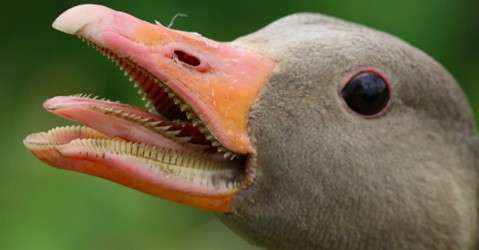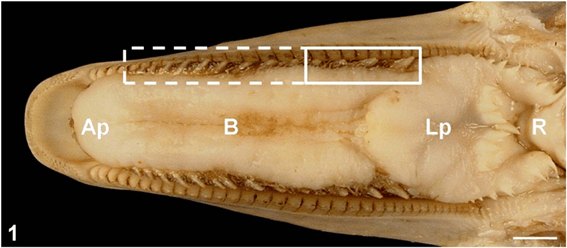Welcome to another curiosity of the week. We will try to publish incredible curiosities about the biological world every week for all of you.
Today, we have an excellent curiosity: do geese or other birds have teeth? Are these incredible animals really the only birds with teeth? Or is there something wrong? In a future article, we’ll talk about the evolution of birds. Stay tuned, it’s a subject I really enjoy, and I’d love to teach you about it. When this article is available, we’ll post it here. We have an article here on our website about dinosaurs, where we briefly mention birds and claim that they are dinosaurs. You can read more about it here.
But that’s not what we’re here for, we’re here to analyze exactly why birds don’t have teeth as well as geese teeth, which is our curiosity today.
Do Other Birds Have Teeth?
Today, there are thousands of known bird species, and none of them have teeth. Not even geese, although they seem to. The reason for the disappearance of teeth is still somewhat mysterious. Previously we thought that the loss of teeth was to facilitate flight. So this characteristic would be very similar to that of hollow bones, reducing weight to facilitate flight. But there are some nuances here, some dinosaurs didn’t have teeth, and didn’t have the ability to fly. Meaning, this characteristic was selected before birds existed, in dinosaurs, who did not have the ability to fly.
So birds just inherited and because it was advantageous it remained to this day and age. We know that one characteristic did not lead to the selection of the other.
And there were also birds that flew and had teeth, like Archaeopteryx. Another birds belonging to the Enantiornithes group had teeth. Unfortunately, their representatives became extinct with the same apocalypse that wiped out the non-avian dinosaurs. Learn more about the Dinosaur extinction.
Tooth loss has occurred in different groups of extant birds, and this loss is correlated with the appearance of a beak1.
We now know that many birds do have the genes for the possible formation of teeth2.
Now this doesn’t mean that they are born with teeth like their ancestors. So if birds today don’t have teeth, how come geese do?
Geese “Teeth” Special Morphology

Fig. 1- A geese displaying teeth? (Source: Unknown)
Here’s a picture of a goose, and it really does look scary. But it should be noted that these are not real teeth, but what we call Tomia. A structure made of cartilage and not enamel like the teeth of most animals3.

Fig. 2- Geese Teeth Morphology (Source: Check Forth Point In Footnotes
This structure can be used to defend themselves and to feed on plants. On their tongue is another interesting structure called the conical papillae, which helps them to swallow and tear their food. With the help of this structure, it is possible to retain food in the oral cavity and redirect it to the esophagus, also preventing regurgitation.
Although they have similar functions to human teeth, for example, they are far from being teeth like their ancestors once had4.
That concludes our weekly curiosity. Now you know that, no, there are no birds with teeth today. But they once did. And geese don’t have teeth, even though these structures in their beaks and tongues are very similar and have very similar functions.
There is a crucial change in the structure of this morphological feature, which differentiates it from an ordinary tooth. Nonetheless, these structures are fantastic and very interesting for anyone who is curious.
Footnotes
- Norell, M., Clarke, J. Fossil that fills a critical gap in avian evolution. Nature 409, 181–184 (2001). https://doi.org/10.1038/35051563 ↩︎
- Harris, M. P., Hasso, S. M., Ferguson, M. W., & Fallon, J. F. (2006). The development of archosaurian first-generation teeth in a chicken mutant. Current Biology, 16(4), 371-377. ↩︎
- Campbell, Bruce; Lack, Elizabeth, eds. (1985), A Dictionary of Birds, Carlton, England: T and A D Poyser, ISBN 978-0-85661-039-4 ↩︎
- Jackowiak, H., Skieresz-Szewczyk, K., Godynicki, S., Iwasaki, S.-i. and Meyer, W. (2011), Functional Morphology of the Tongue in the Domestic Goose (Anser Anser f. Domestica). Anat Rec, 294: 1574-1584. https://doi.org/10.1002/ar.21447 ↩︎
Thank you for reading. If you’re curious and want to learn more, go to the “articles” section. Every week there are new articles published and new curiosities, stay tuned! Subscribing to our Newsletter will notify you when a new article drops.
Read Next
